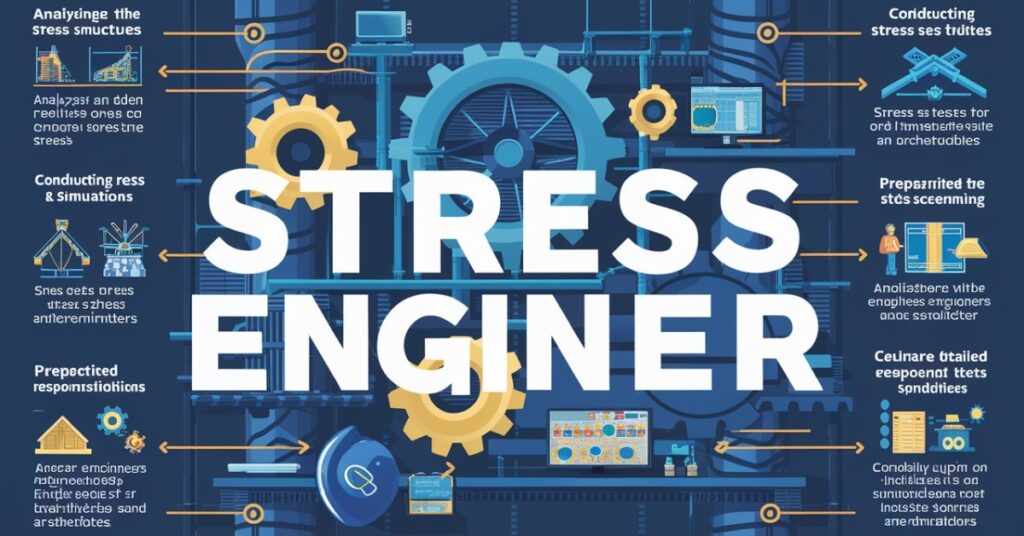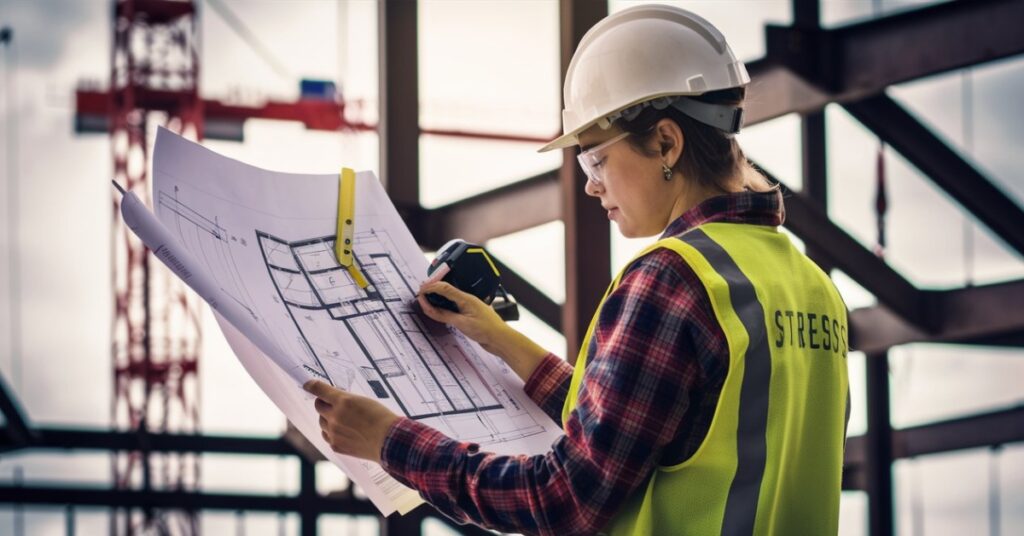In the vast landscape of engineering, the significance of a Stress Engineer often remains underestimated, yet it stands as a pivotal role in ensuring structural integrity and safety. Play a key role in guaranteeing the safety, dependability, and solidity of different structures and mechanical systems. Their knowledge is essential in avoiding malfunctions and enhancing efficiency. This piece explores the distinct duties, abilities, and importance of stress engineers in the modern era of technology.
What is a Stress Engineer
A stress engineer specializes in analyzing the stresses and strains within materials and structures under various conditions. Their main goal is to anticipate how materials and structures will respond under various forces, vibrations, temperatures, and other external conditions. This involves complex calculations and simulations to determine whether a design can withstand the intended loads without failure.
Key Responsibilities of a Stress Engineer

Structural Analysis: Stress engineers perform detailed structural analysis using mathematical models and computer simulations to predict how structures will respond to various forces and loads. This helps in identifying potential weaknesses and areas prone to stress concentration.
Material Selection: Choosing the right materials is crucial for the structural integrity of any project. Stress engineers evaluate different materials’ properties.
Load Testing: They conduct physical tests and experiments to validate theoretical models and simulations. Load testing helps in understanding how structures behave under real-world conditions and in verifying the accuracy of analytical predictions.
Design Optimization: Stress engineers collaborate with design teams to enhance structural designs, ensuring robustness and cost-efficiency. This involves iterative processes to refine designs, boost performance, and reduce material usage and weight.
Failure Analysis: The causes by examining the failed components and performing forensic analysis. This helps in identifying the root causes and developing strategies to prevent future failures.
Compliance and Standards: They ensure that designs comply with relevant industry standards, regulations, and safety codes. This includes preparing detailed documentation and reports for regulatory approvals and audits.
Essential Skills and Qualifications
To thrive as a stress engineer, a blend of technical prowess, analytical acumen, and hands-on experience is essential. Here are some of the key skills and qualifications essential for this role:
Educational Background
Most stress engineers hold a bachelor’s degree in mechanical engineering, aerospace engineering, civil engineering, or a related field. Deep expertise in specialized areas like finite element analysis (FEA) and materials science. These pathways unlock deeper insights and foster professional growth opportunities. This advanced learning cultivates a deeper grasp and mastery of these subjects.
Technical Proficiency
Finite Element Analysis (FEA): Mastering FEA software like ANSYS, Abaqus, or NASTRAN is essential for conducting intricate simulations and stress analyses effectively.
Computer-Aided Design (CAD): Proficiency in CAD software (like SolidWorks, AutoCAD, or CATIA) is crucial for creating and analyzing intricate 3D models of structures.
Programming Skills: Familiarity with programming languages like Python, MATLAB, or C++ can prove advantageous for automating calculations, crafting bespoke analysis tools, and managing extensive datasets.
Stress Engineer Analytical and Problem-Solving Skills
Stress engineers must possess strong analytical skills to interpret data, identify patterns, and solve complex problems. This includes the ability to think critically and approach challenges methodically.
Attention to Detail
Given the precision required in structural analysis, stress engineers must have a keen eye for detail to ensure accuracy in their calculations, simulations, and reports.
Communication and Collaboration
Effective communication skills are essential for stress engineers to convey technical information clearly and collaborate with multidisciplinary teams. This includes writing detailed reports, presenting findings, and discussing technical concepts with non-engineers.
Practical Experience
Hands-on experience through internships, co-op programs, or entry-level positions is invaluable for aspiring stress engineers. Practical experience helps in understanding real-world applications, gaining proficiency with tools and software, and developing problem-solving skills.
Applications and Industries Stress Engineer
Stress engineers play a critical role in various industries, each with unique challenges and requirements. Here are some of the key sectors where stress engineers make a significant impact:
Aerospace and Aviation
In the aerospace industry, stress engineers ensure the structural integrity of aircraft, spacecraft, and their components. They assess the stresses on wings, fuselages, landing gears, and propulsion systems to guarantee safety and optimal performance under extreme conditions, including high speeds, pressure variations, and temperature changes.
Civil Stress Engineer
Stress engineers in civil engineering work on infrastructure projects, including bridges, buildings, dams, and tunnels. They analyze the forces exerted by wind, earthquakes, and traffic loads to ensure structures can withstand these stresses over their lifespan.
Automotive
In the automotive industry, stress engineers concentrate on analyzing and optimizing vehicle components, including chassis, frames, and suspension systems. They analyze the impact of vibrations, collisions, and various operational loads to enhance safety, performance, and durability.
Energy and Power
Stress engineers in the energy sector work on projects related to oil and gas, nuclear power, and renewable energy. They analyze the structural integrity of pipelines, pressure vessels, wind turbines, and other critical infrastructure to prevent failures and optimize efficiency.
Marine and Offshore
In the marine and offshore industries, stress engineers ensure the structural integrity of ships, submarines, offshore platforms, and underwater pipelines. They analyze the impact of waves, currents, and pressure differentials to ensure safety and reliability.
The Future of Stress Engineer
The role of stress engineers continues to evolve with advancements in technology and the growing complexity of modern engineering projects. Here are some trends and developments shaping the future of stress engineering:
Advanced Simulation Techniques
They assess stresses on wings, fuselages, landing gears, and propulsion systems to ensure safety and performance under extreme conditions like high speeds, pressure differentials, and temperature fluctuations.
Integration of AI and Machine Learning
Artificial intelligence (AI) and machine learning (ML) are increasingly being integrated into stress analysis workflows. These technologies can automate repetitive tasks, identify patterns in large datasets, and optimize designs by predicting how changes will impact structural performance.
Sustainable Design
Sustainability is becoming a key focus in engineering, and stress engineers are at the forefront of developing eco-friendly designs. This includes using lightweight materials, optimizing structures to reduce material usage, and ensuring the durability and longevity of components to minimize environmental impact.
Additive Manufacturing
Additive manufacturing (3D printing) is revolutionizing the way components are designed and produced. Stress engineers are leveraging this technology to create complex, lightweight structures that are difficult or impossible to manufacture using traditional methods.
Conclusion to Stress Engineer
Stress engineers play a vital role in ensuring the safety, reliability, and performance of structures and mechanical systems across various industries. Their expertise in analyzing stresses and strains, optimizing designs, and preventing failures is crucial for the advancement of modern engineering. As technology continues to evolve, the demand for skilled stress engineers will only grow, making this a dynamic and rewarding field with significant opportunities for innovation and impact.

